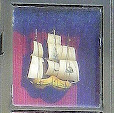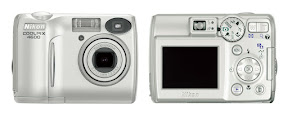

High up on a hill in a park…

… there is a playground, with a play fort.
“There are no rules of architecture for a castle in the clouds.”
Gilbert K. Chesterton
Pictures from mid April, 2010.


High up on a hill in a park…

… there is a playground, with a play fort.
“There are no rules of architecture for a castle in the clouds.”
Gilbert K. Chesterton
Pictures from mid April, 2010.
To finish off the Laundry Day, there was music and dancing.
The strange instruments are called nyckelharpa (pl: nyckelharpor)
(key harp, or key fiddle). If you like, you can listen to it here.
Some more pictures from Laundry Day. I’m afraid I don’t have names for all contraptions and vessels used (not even in Swedish). I’ll just let the pictures speak for themselves.
Above on the left you can see there were also musicians present.
I’ll get back to them in another post.

More pictures from Laundry Day in our town centre.

“In England nobody understands what rag-carpets are; but in every part of America they are more or less used. The wealthy use them for their kitchens, and sometimes dining rooms; the farmers, for their chambers; and often every room in the house will be covered with them ... Every conceivable kind of woollen cloth was cut into little shreds about half an inch wide, and an inch long. These were all joined together lengthwise, and then wound in balls. The children's employment was to help in sewing the shreds together, and thus to make hundreds and thousands of yards of woollen band. This was afterwards woven into a coarse kind of carpet, and produced a mottle of all colours, not at all unpleasing to the eye. Occasionally such carpets would be dyed all of one colour; sometimes they were woven into a regular pattern, stripe or plaid; but this...was to be a mottled one; and their young friends...were invited for a few days to help in this homely but curious work; during which, however, some amusing book was read, and thus the time passed pleasantly.”
Mary Botham Howitt, Our Cousins in Ohio, 1849
Without any research to prove it, I’d say the traditional Swedish rag-carpets are usually striped; as can also be seen in these pictures.


“Rugs made of cloth would generally stand up to being washed in a tub if they were small enough. Bigger ones could be rinsed through in a creek or stream. In Finland there is a tradition of washing rag rugs in summer in the nearest lake or river. Some Finnish women used to freshen their rugs at the end of winter by spreading them out on snow, sprinkling more on top, then hanging them to dry in sunshine and/or breeze.”

Quotes from: http://www.oldandinteresting.com/history-rag-rugs.aspx
On Saturday, we had a rather unusual event taking place in town: Laundry Day, arranged by the Textile Museum, to show how this was done a hundred years or so ago.
On 10 March, I had a post here entitled Looking Forward, Looking Back. That included a photo of a mural painting in our Town Hall of how people used to do their washing in the river back in those days. The Town Hall was built in 1910 and celebrates its centenary this year.
Yesterday’s post Going Back In Time also had some pictures of Saturday’s festivities, including the possibility to take a ride around the park on a horse-drawn wagon.
Today, since I intend to partake as usual in Mosaic Monday at Mary’s Little Red House, I’m sticking to collages, and taking the opportunity to give you the “overall view”. But it was perfect photo weather and I took nearly 100 shots, so I intend to get a few more blog posts out of them. I’ll be showing more detail another day.










“The Christian religion, though scattered and abroad will in the end gather itself together at the foot of the cross.” – Johann Wolfgang von Goethe




 |


